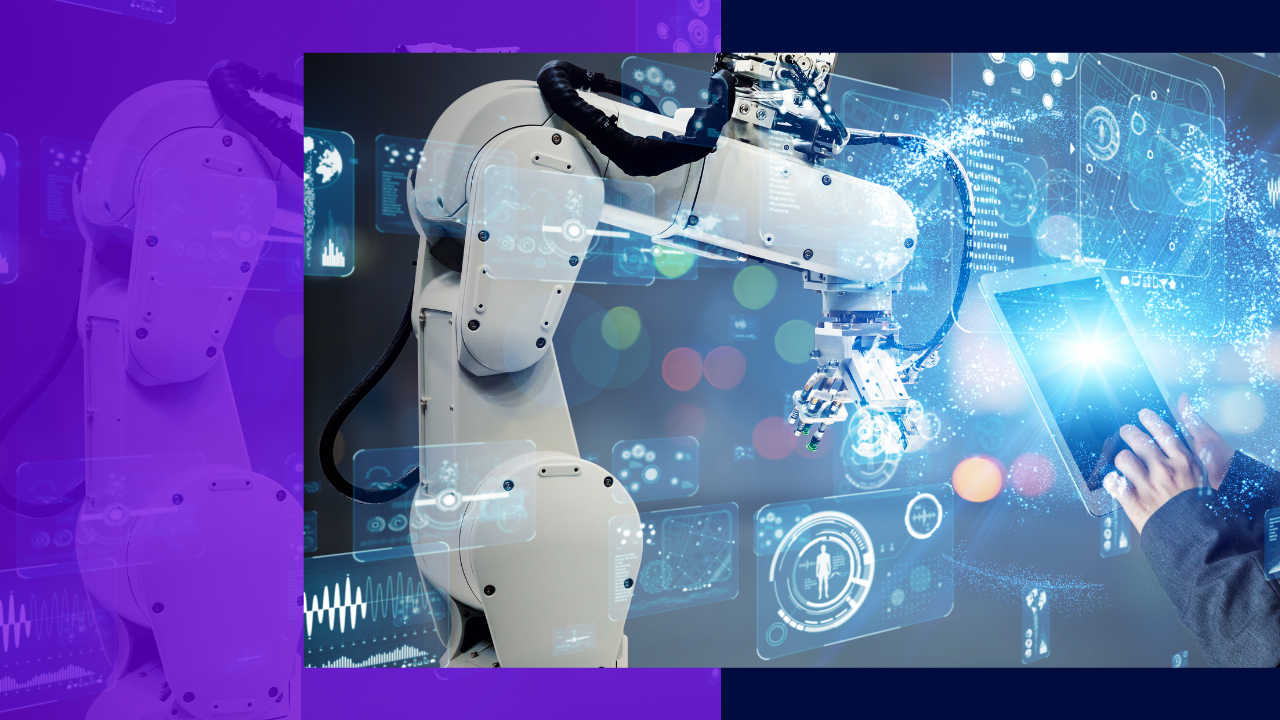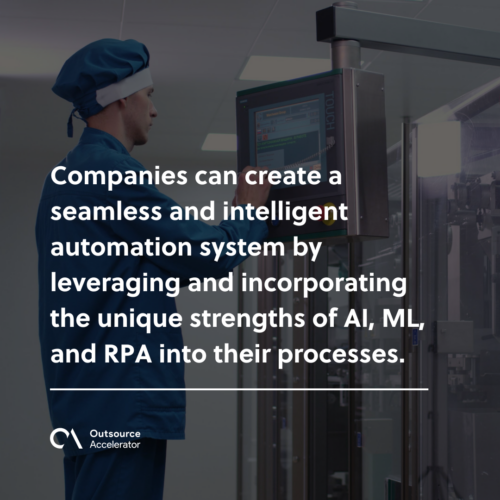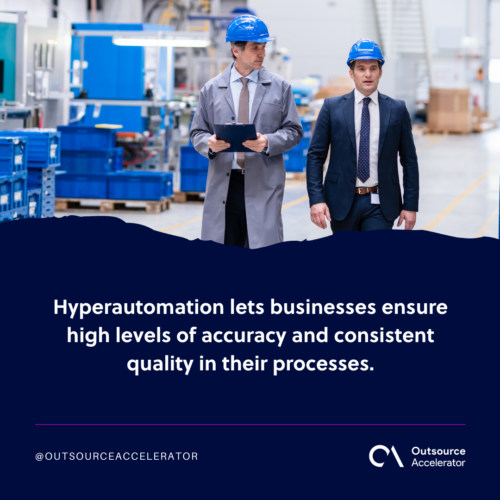Embracing hyperautomation: The future of business efficiency

The dynamic nature of market environments forces businesses to look for ways to enhance operational efficiency, reduce costs, and improve productivity.
One of the ways they do this is by adopting hyperautomation.
Through hyperautomation, companies can increase their efficiency without a commensurate increase in operational costs.
Gartner, an industry leader in tech research, described hyperautomation as having changed from “optional to vital” due to the global shift to digital business models.
The company has also listed hyperautomation among its top ten strategic technological trends list.
These automated processes not only reduce human error but also enable employees to focus on strategic initiatives that add value to the business.
As such, it has become even more important for companies to know more about hyperautomation and its benefits to businesses.
Read on below to learn more about this innovation.
What is hyperautomation?
Hyperautomation consists of increasing the automation of business processes (production chains, workflows, marketing processes, etc.) by introducing:
- Artificial intelligence (AI)
- Machine learning (ML)
- Intelligent process automation (IPA)
- Robotic process automation (RPA)
It involves using the abovementioned automation solutions to optimize complex processes from end to end.
Companies adopting hyperautomation in their business models augment everything that can be automated, such as production chains, workflows, and marketing processes.
Hyperautomation helps enterprises minimize – if not eliminate – the human element in their low-value activities.
Automation simplifies tasks through technology, while hyperautomation goes beyond by utilizing advanced technologies such as AI and ML to automate entire business processes, making them more intelligent and adaptable to complex situations.
Digital process automation serves as the foundation of hyperautomation, enabling businesses to orchestrate and manage their operations with precision and agility to drive innovation and growth.

Key components of hyperautomation
To better understand the concept of hyperautomation, it is important to have a deeper understanding of its key components:
Artificial intelligence and machine learning
Artificial intelligence and machine learning are among the fundamental components of automation. AI and ML technologies enable machines to interpret and learn from data, make predictions, and continually improve themselves in the process.
Businesses make their hyperautomation systems increasingly more intelligent by incorporating AI and ML.
They empower companies to automate decision-making processes and overcome complex scenarios.
AI enables machines to perform tasks that typically require human intelligence, such as natural language processing, image recognition, and decision-making.
It is clear that embracing artificial intelligence and machine learning in business process management is essential for staying ahead in an increasingly digital world.
Robotic process automation
Robotic process automation, or RPA, is another critical factor of hyperautomation. With RPA, organizations harness the power of software robots to automate rule-based, repetitive tasks within software applications.
These bots are far superior to their human counterparts at data entry, validation, and extraction. They perform these tasks more precisely and efficiently.
By removing manual human intervention in mundane and repetitive processes, RPA effectively boosts productivity and reduces errors. It lets businesses allocate human resources to more critical functions.
With automation technologies, RPA is a key solution for companies aiming to optimize processes and stay competitive in the digital landscape.
Intelligent process automation
Equally important as the first two hyperautomation components, intelligent process automation combines the capabilities of AI, ML, and RPA.
Doing so enables automation systems to understand and process unstructured data.
With IPA, businesses can automate even processes that usually require human intervention.
Integrating cognitive technologies (e.g., natural language processing and image recognition) significantly improves a company’s hyperautomation capabilities and efficiency.
Intelligent process automation, particularly in the context of intelligent business process management, is revolutionizing the way organizations operate by combining cutting-edge technology with advanced decision-making.
Benefits of hyperautomation
Through hyperautomation, businesses can unlock a host of benefits they would otherwise be missing out on.
These advantages include:
Enhanced productivity and efficiency
Among the many benefits of hyperautomation is a notable increase in the efficiency and productivity of businesses.
Companies can streamline their operations by automating repetitive and time-consuming tasks. This allows them to accelerate processes and achieve higher output with fewer resources.
In turn, the company’s increased efficiency lets it meet consumer demand more effectively, resulting in improved customer satisfaction and loyalty.
Embracing hyperautomation lets professionals focus on high-value tasks needing creativity and critical thinking, while routine tasks are efficiently handled by automation tools, leading to greater effectiveness and success in the long run.
Improved accuracy and output quality
Hyperautomation lets businesses ensure high levels of accuracy and consistent quality in their processes.
As stated earlier, reducing (or completely eliminating) human intervention in an organization’s operations allows for greater precision and reliability.
Prioritizing accuracy and output quality enhances business process overall performance and fosters a reputation for excellence in the competitive market landscape.
Moreover, as hyperautomation systems continuously learn from data through machine learning, they become even more effective over time.
Cost savings and resource optimization
Implementing hyperautomation also allows businesses to cut costs substantially.
By automating tasks that can be done without human intervention, companies can reduce their operational costs and reallocate resources—particularly human resources—where they are most needed.
Automation initiatives are a powerful tool to achieve these objectives.
This ability to transfer human talent where they can have the most impact improves the company’s resource utilization and significant cost savings.

Ethical considerations when implementing hyperautomation
It is essential to prioritize ethical considerations to build trust with stakeholders and ensure a sustainable and responsible approach to hyperautomation within the realm of complex business processes.
Despite the numerous benefits that hyperautomation brings to businesses, companies must consider several aspects for its ethical implementation.
Data privacy and security
Hyperautomation inadvertently leads to organizations handling a large amount of sensitive data. Businesses must ensure that they have robust data privacy and security measures in place to protect these data from unauthorized access.
The use of automation tools has become increasingly essential in enhancing data protection efforts with the rapid advancements in technology.
Algorithmic bias
Algorithmic bias is a pressing issue in the realm of automation efforts.
Like other AI with machine learning capabilities, hyperautomation systems can unintentionally exhibit bias, which results in unfair outcomes.
It is the responsibility of companies to monitor their hyperautomation systems constantly and address any algorithmic biases that arise.
Workforce impact
The workplace transformation brought about by hyperautomation can impact the roles and responsibilities of workers.
Companies must keep their employees upskilled and able to adapt to changing work environments.
As organizations strive to streamline their business processes to stay competitive, employees’ roles are shifting from manual tasks to more strategic and value-driven activities.







 Independent
Independent




